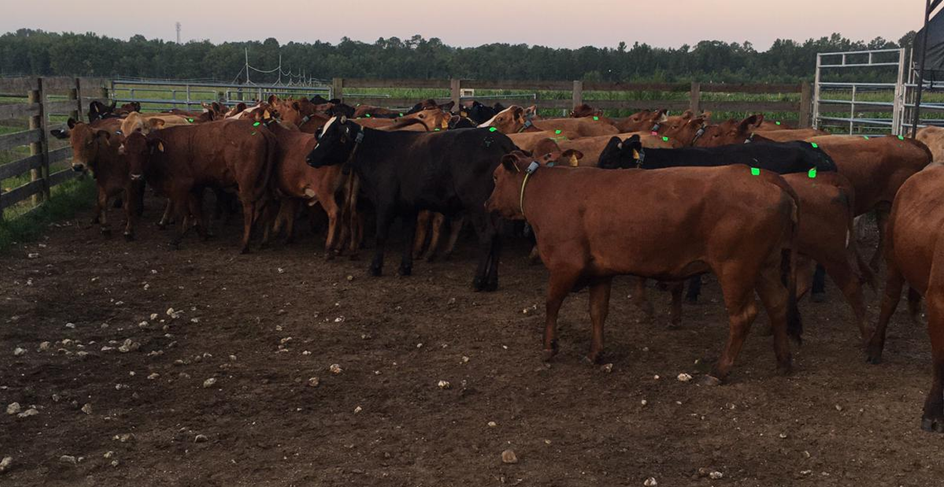Getting cows bred and keeping them pregnant is key to capitalizing on the record cattle…
The Recipe for Getting Started with AI
Artificial insemination (AI) is a proven way to improve genetics. It is also an efficient method to front-load when calves are born during the calving season, which helps increase the weaning weight average of the whole herd.
AI is still an underutilized breeding tactic in the U.S., with only 11.6% of beef operations implementing AI, according to the USDA National Animal Health Monitoring System’s Beef 2017 survey report. Some reasons often shared for not implementing AI include additional labor needs and costs. However, the advantages of front-loading and potentially shortening the calving season can outweigh those perceived constraints.
I often compare AI to cooking: if you follow a proven recipe, you’re a lot more likely to have a good experience. Consider the following recipes for success as you get started.
Have a Multiyear Perspective on the Benefits of Synchronization
The use of estrus synchronization protocols, especially those including progestins, can help induce non-cycling heifers and cows to begin cycling at the very start of the breeding season. Even if they do not conceive to the AI service this year, inducing estrous cyclicity can allow these females to conceive earlier during the breeding season than they would have without intervention. This sets these females up to have more time postpartum prior to the start of next year’s breeding season, setting the stage for better reproductive performance in future years.
Front-loading timing of conception within the breeding season also means front-loading timing of calving during the calving season. Aside from the benefits for females in terms of their fertility in next year’s breeding season, earlier calving adds a tremendous amount of value to this year’s calf crop. Earlier born calves are older at weaning and therefore heavier. That means more pounds to sell. From birth to weaning, a calf gains approximately 2 lb. per day. Moving a cow or heifer up to conceive just one estrous cycle earlier in the breeding season this year would add 21 days to the age of the calf at weaning, which could equal up to 42lb. in weaning weight.
Making progress in front-loading and shortening the calving season is a multiyear process, but it is well worth getting started. It is okay if you do not achieve remarkable pregnancy rates to AI in your first year of using estrus synchronization; the goal is to start moving in the right direction. With that in mind, there is no magic protocol to use. Many resources are available through Extension and genetics providers to help guide protocol selection. Select one with a treatment schedule that works for your operation, and get started.
Estrus Detection
If it is your first time using AI in your operation, I strongly recommend using fixed-timed AI and working with a professional technician. This simplifies the AI program by taking heat detection out of the equation.

Heat activity prior to fixed-time AI will still affect results. Research continues to show when animals express estrus prior to fixed-time AI, they have great fertility in terms of their pregnancy outcomes than females that don’t express estrus. But, a fixed-time AI protocol allows you to easily implement an AI program and achieve acceptable results without all the time, labor and room for error associated with heat detection.
If this concept of fixed-time AI makes you nervous, consider using breeding indicators, adhesive patches with surface ink that rubs off. Even if you are breeding at a fixed-time, the breeding indicators can give you confidence that the synchronization protocol worked effectively. Or, based on the breeding indicator information, you could adjust your strategy to be more effective, like switching to a split-time AI approach, in which females that aren’t showing estrus activity do not receive timed AI until the next day.
Another benefit of using breeding indicators is the ability to make mating decisions based on the amount of estrus activity exhibited. If females are showing more estrus intensity (a higher percentage of the patch surface ink rubbed off), the odds of pregnancy success to AI are increased. So, breeding those females with higher value semen (e.g., sexed semen or semen from specific sires) could be done with better results. Breeding indicators are a simple, inexpensive tool that can provide a lot of information.
Hop in With Heifers
If you have ever used AI in your operation, heifers are a great place to start. There is less to manage with heifers compared to cows with a calf at their side. Also, calving ease sires are often the highest-price bulls to purchase for natural service. When it is time to replace the calving ease bulls you use to service heifers, consider investing some of those dollars in an AI program instead. An AI trial run with your heifers for one year can help prove you can effectively improve your reproductive program across the herd. If you aren’t happy with the results after attempting AI for a couple years, you can always buy bulls. But I think you’ll be satisfied with the overall benefits and the fewer natural service bulls required for the operation.
You can find easy-to-follow resources through Extension services and genetics providers to help you get started. Consult your veterinarian, Extension specialist or genetics provider to develop a plan and, mosvt importantly, just get started. As you see the benefits build over the years, you will likely wish you had started a lot sooner.
Source:
- Source: Drovers, Jordan Thomas
- Date: March 2022
- Link: http://digitaledition.qwinc.com/publication/?m=40918&i=739235&pp=1&view=articleBrowser&article_id=4220744&ver=html5



